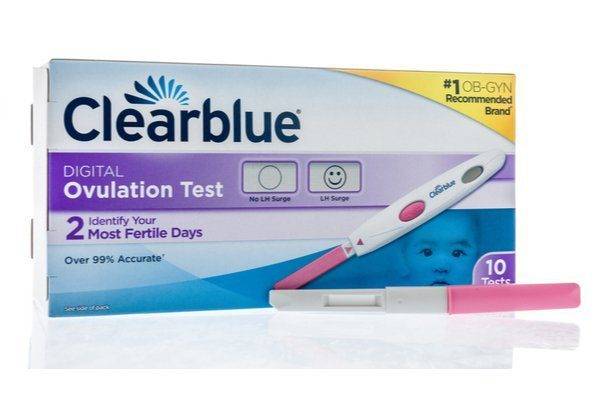If you and your partner are trying to get pregnant, you are probably also trying to pin down your exact time of ovulation either using an ovulation calculator or ovulation kit. Ovulation is the time of the month when you are the most fertile, so knowing exactly when you are ovulating is a sure way to boost your chances of getting pregnant.
The truth is, detecting your time of ovulation sounds more difficult than it really is. There are actually many signs that can indicate when you are ovulating or if ovulation has already happened. This is valuable knowledge to have and is truly a hack to increasing your chances of pregnancy.
Ovulation and conception go hand in hand. If you are ready to start a family, it might be time that you familiarize yourself with the tips and tricks to detecting your most fertile time of the month.
Ovulation: What, When, and How?
First things first, what exactly is ovulation? Ovulation occurs each month when one of the ovaries releases an egg. This is a woman’s most fertile time of the month, which is why so many are on the hunt to discover their ovulation time, whether it be to avoid an unplanned pregnancy or to increase the chances of pregnancy.
If you have a regular cycle, you most likely ovulate between day 11 and day 21 of your cycle, day 1 being the first day of your period. This means that the average woman’s most fertile time of the month is between day 8 and day 21.
If your menstrual cycles fall on the shorter side – lucky you – then you most likely ovulate closer to day 11. For those with longer menstrual cycles, you are more likely to ovulate closer to day 21.
We understand that the amount of time between day 11 and day 21 is a pretty big window. While some may choose to have sexual intercourse every day, or every other day, between day 8 and day 21, there are other ways to make the odds of pregnancy in your favor. That would be learning how to track your menstrual cycle to discover your exact time of ovulation.
Your Fertile Peak: Top Signs and Symptoms
Learning how to track your cycle and time of ovulation offers a wealth of benefits for not only getting pregnant but for better understanding your body and what goes on every month. There are some ovulation signs that tell you when ovulation is approaching, while others let you know that it has passed.
While there are numerous signs that indicate ovulation, there are three signs that are the most common for tracking ovulation. Remember that every woman is different and ovulation symptoms vary, so do not be alarmed if you do not experience these exact symptoms.
Here are the top three most common signs to help you detect when you are ovulating:
1. Cervical Fluid
Did you know that your cervical fluid, also known as cervical mucus, can tell you when you’re approaching ovulation? Many women are unaware that the consistency of their cervical fluid changes throughout their cycle for a very specific reason.
You may notice you’re your cervical mucus is dry at times and more sticky, watery, or creamy other times. When you are nearing ovulation, your cervical fluid tends to become more of an egg-white consistency. This indicates that your cervical mucus is ready to help the sperm swim up into the female reproductive system. In other words, it’s time for you and your partner to get busy!
Learn how to observe your cervical fluid throughout your cycle so that when it transforms into a wet or egg white-like consistency, you know your body is ready to make a baby.
2. Basal Body Temperature
Another way to determine when you’re ovulating is by tracking your basal body temperature (BBT). Throughout your cycle, you may experience a relatively consistent BBT. But when ovulation is on the horizon, many women notice a slight decline that is followed by a sharp increase. When you see that sharp increase in temperature, it means that ovulation has passed.
Once you become accustomed to tracking your BBT each month, you can predict when ovulation will occur next. So go out and get yourself a special basal body thermometer and make sure you get your reading first thing in the morning after at least three to five hours of sleep!
3. Cervical Position
OB/GYNs aren’t the only ones capable of examining your cervix! If you can master this sign along with the other two, you truly are the triple threat of ovulation tracking.
Your cervix experiences many changes throughout your menstrual cycle. When you ovulate, the cervix is soft, high, open, and wet. Using two fingers, check your cervix on a daily basis and write down your observations. Some women can easily feel these changes in their cervix, while others find it more difficult. So don’t be discouraged if you find this part challenging.
Practice makes perfect, so try to get in the habit of checking your cervix every day!
While these are the three most common ways to track ovulation, there are many other signs and symptoms that you may experience around your time of ovulation. These three signs are the most common ways to track your time of ovulation.
Other signs of ovulation include the following:
- Light Spotting: Some women notice some light spotting at the time of ovulation.
- Slight Cramping: Slight pain or mild cramps in your lower abdomen can indicate that you are about to ovulate. This is also commonly known as ovulation pain.
- Tender Breasts: The hormones produced after ovulation can lead to breast tenderness. Note that this is not a reliable method of predicting ovulation, but can definitely be a sign that ovulation has passed.
- Increased Sex Drive: Your body knows when it’s at its most fertile. If you experience a noticeable increase in sexual desire, it could definitely indicate that you are ovulating.
Putting it All Together
Every woman is different so it makes sense that the way in which our bodies indicate ovulation is also different. Learning how to track your ovulation is easy but it does take consistency if you are serious about pinpointing your most fertile time of the month.
Need help tracking your estimated fertility window? Use our ovulation calculator.




